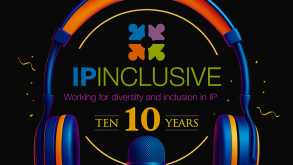The first two articles in this series dealt with experiments by the author using two AI assistants. One was internally adapted for use by Cabinet M Oproiu’s patent attorneys by deleting its memory.
This article addresses considerations with respect to using the AI assistants when building the perspective of the skilled reader.
The author’s considerations
Patents are written for a person skilled in the art – alternatively called a skilled reader – who is supposed to understand the technical teaching sufficiently to work the invention.
Most patent laws define a person skilled in the art as a juridical fiction encompassing one person or several persons joined in a team. A skilled reader is defined by two features: (i) they have technical skills in the field of the invention, having read everything relevant that was published before the date in question, and, importantly, (ii) they are not creative, being capable only of executing tasks based on routine and acquired knowledge.
The questions of who exactly constitutes a skilled reader and what are the limits of their understanding are very subjective. Such issues are usually dealt with in litigation matters, where a detailed debate takes place.
In the daily professional life of a patent attorney drafting and prosecuting a patent application, the above philosophical debate is translated into simpler words: how ‘clever’ the skilled person is. Specifically, the cleverer the skilled person is, the fewer details and explanations must be given in the patent application.
Most patent offices use AI assistants in the search and examination stage. For example, AI assistants can help in finding relevant prior art and in selecting, among the found documents, which is the closest state of the art.
The author believes that using AI assistants in the search and examination stage can modify the definition of a skilled person. Two issues of concern are discussed below.
First issue: an AI-enhanced skilled person becomes more sophisticated
AI assistants are known for being capable of processing a much larger quantity of documents than a human person. As a result, they are able to make more connections between prior art documents compared with humans. The consequence is that when assessing inventive step – where usually a mosaic of documents is accepted as prior art – the number of citations and/or their complexity is likely to increase.
Put in simple terms, a skilled reader becomes cleverer and more sophisticated, which, in principle, should be a positive because the applicant would not be constrained to explain as many details, but the effect is rather contrary: more citations and more connections between prior art documents lead the applicant to explain in more detail in the application or in the response to various office actions.
Second issue: an AI-enhanced skilled person may wrongly cite documents
To cite a document as relevant prior art, the AI assistant makes a summary of it based on certain criteria expressed as algorithms when comparing the document with the application. If the algorithm has problems, then the citation is, in fact, not relevant. The consequence is that if an incorrect citation is inserted in the office action, this leads to additional work for the patent attorney that could have been avoided.
The author has often found that summaries made by AI assistants are not relevant for certain subjects of interest precisely because their summaries are based on criteria other than those needed by the attorney and/or examiner.
The negative aspects of both the above issues can be corrected if the examiner uses their human judgement to correct the rough data provided by such assistants before sending the search or examination report.
Initial conclusions on the use of AI for defining a skilled person
The use of AI assistants during a search and examination process by examiners can be helpful, but it depends heavily on human review of the rough data provided by such assistants and on the willingness to correct the algorithms when systematic errors are found.












